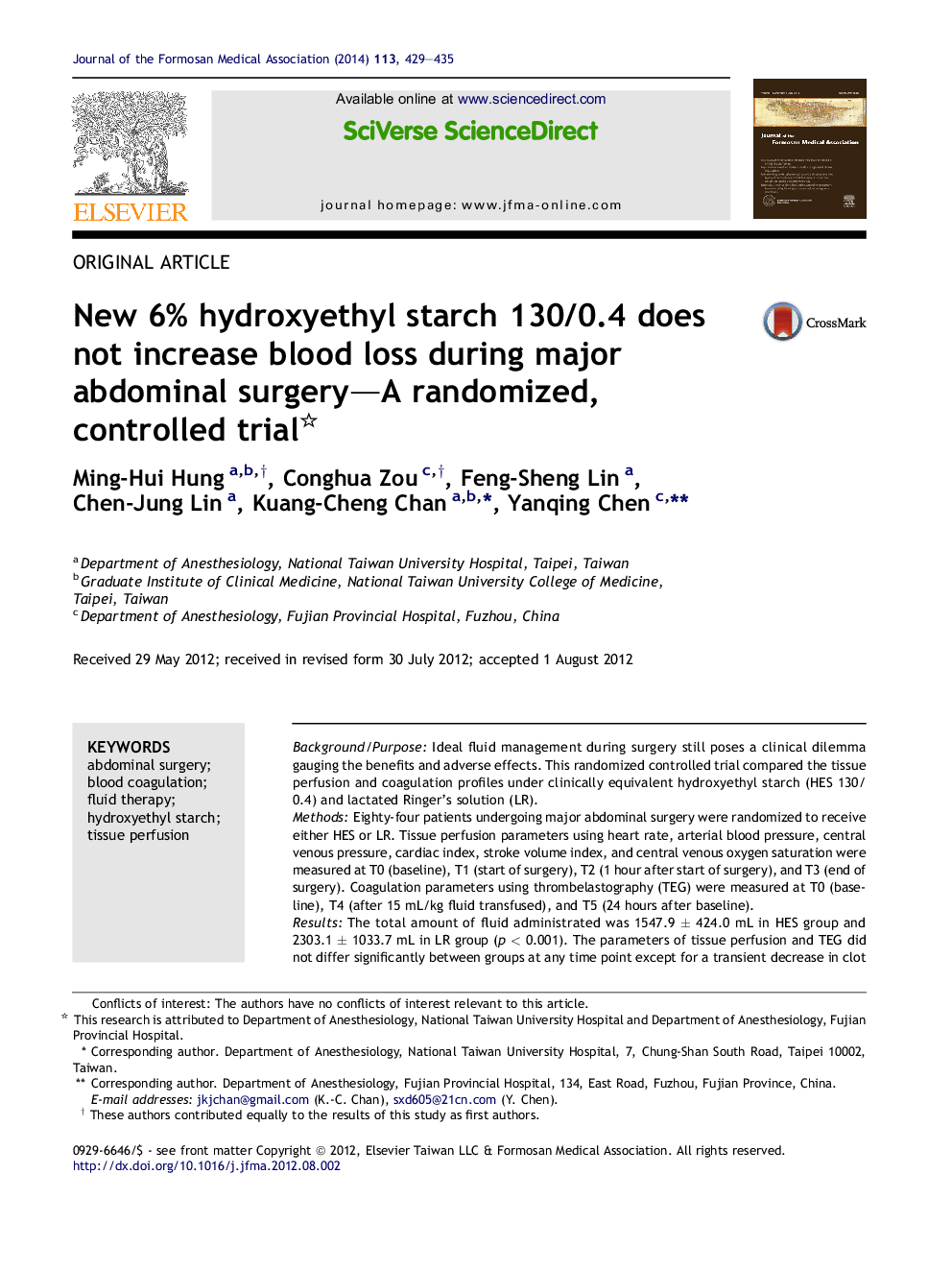| Article ID | Journal | Published Year | Pages | File Type |
|---|---|---|---|---|
| 3478848 | Journal of the Formosan Medical Association | 2014 | 7 Pages |
Background/PurposeIdeal fluid management during surgery still poses a clinical dilemma gauging the benefits and adverse effects. This randomized controlled trial compared the tissue perfusion and coagulation profiles under clinically equivalent hydroxyethyl starch (HES 130/0.4) and lactated Ringer's solution (LR).MethodsEighty-four patients undergoing major abdominal surgery were randomized to receive either HES or LR. Tissue perfusion parameters using heart rate, arterial blood pressure, central venous pressure, cardiac index, stroke volume index, and central venous oxygen saturation were measured at T0 (baseline), T1 (start of surgery), T2 (1 hour after start of surgery), and T3 (end of surgery). Coagulation parameters using thrombelastography (TEG) were measured at T0 (baseline), T4 (after 15 mL/kg fluid transfused), and T5 (24 hours after baseline).ResultsThe total amount of fluid administrated was 1547.9 ± 424.0 mL in HES group and 2303.1 ± 1033.7 mL in LR group (p < 0.001). The parameters of tissue perfusion and TEG did not differ significantly between groups at any time point except for a transient decrease in clot kinetic and clot strength at T4 for HES group. There was no significant difference in blood loss and consumption of blood products between the two fluids.ConclusionHES 130/0.4 is a more efficient intravascular volume expander to maintain tissue perfusion than conventional crystalloid. Transient hypocoagulability induced by HES 130/0.4 does not warrant excessive blood loss and blood transfusion.
